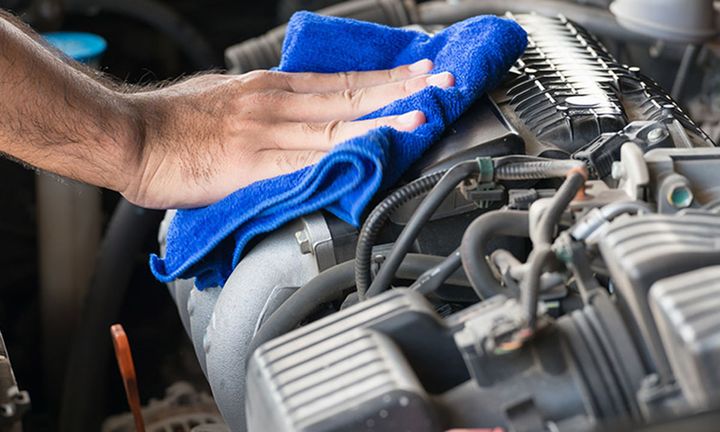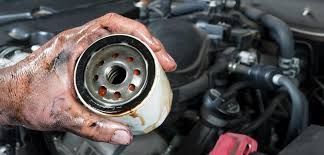


Spilling oil on your car's engine is a common occurrence, especially during routine maintenance tasks like oil changes. While it may seem like a minor issue, leaving spilled oil unattended can lead to potential hazards and long-term damage to your vehicle. Engine oil is a crucial component that lubricates and protects the moving parts of your engine, but when spilled on the exterior, it can pose risks such as fire hazards, environmental pollution, and damage to various engine components.

Over the years, I've identified several common causes that lead to oil spills on engines. Let me walk you through some of the most frequent scenarios:
| Cause | Description |
|---|---|
| Overfilling the Engine Oil | When too much oil is added during an oil change, it can seep out from various points, such as the fill cap, valve covers, or crankcase vents. |
| Loose or Improperly Installed Oil Filter or Drain Plug | If these components are not tightened correctly after an oil change, oil can slowly leak out and spill onto the engine components. |
| Degraded Gaskets, Seals, and Hoses | Over time, the gaskets, seals, and hoses in your engine can degrade and develop cracks or holes, allowing oil to escape and spill onto the engine components. |
When you notice an oil spill on your engine, the first step is to identify the source of the leak. Here's how I approach the inspection and diagnosis process:
Clean the engine thoroughly with a degreaser to remove any existing oil and grime.
Start the engine and let it run for a few minutes.
Use a flashlight to inspect all areas of the engine, looking for fresh oil seepage or drips.
Pay close attention to gaskets, seals, hoses, and filters for any wetness or oil trails.
Place cardboard or rags under the engine to catch any drips and identify the source.
| Sign | Potential Issue |
|---|---|
| Oil around the Oil Filter or Drain Plug | Loose or improperly installed filter/plug |
| Oil on the Valve Covers | Faulty valve cover gasket |
| Oil at the Front or Rear of the Engine | Crankshaft seal leak |
| Oil Underneath the Engine | Potential oil pan gasket leak |
Once I've identified the source of the oil leak, it's time to address the issue. Here are the typical repair steps I follow:
Check and correct the oil level by draining the excess oil.
Clean up any spilled oil using a degreaser and rags.
Locate the source of the leak (filter or drain plug).
Tighten the filter or drain plug to the specified torque.
Clean up any spilled oil.
Locate the source of the leak (gasket, seal, or hose).
Follow the repair manual to access and remove the faulty component.
Clean the mating surfaces thoroughly.
Install the new gasket, seal, or hose, following any special instructions.
Reassemble the components and tighten all fasteners to specifications.
Refill the engine oil and check for leaks.
Use new gaskets and seals; do not reuse old ones.
Apply a thin coat of gasket sealant if recommended.
Tighten bolts and fasteners in the correct sequence and torque.
Follow recommended service intervals for oil changes and inspections.
Use high-quality engine oil and filters.
Inspect gaskets, seals, and hoses during routine maintenance and replace as needed.
Avoid overfilling the engine with oil.
Ensure all components are properly tightened after maintenance.
| Repair | Typical Cost Range |
|---|---|
| Simple Fixes (tightening filter/plug) | $50-$100 for labor |
| Gasket or Seal Replacement | $100-$500 (parts and labor) |
| Major Repairs (oil pan gasket, timing cover gasket) | $500-$1,000 or more |
| Crankshaft Seal Replacement | $500-$2,000 or more (extensive labor) |
It's essential to address oil leaks promptly to prevent further damage and more costly repairs down the line. Regular maintenance and inspections can also help identify potential issues before they become major problems, saving you money in the long run.

Spilling oil on your engine may seem like a minor inconvenience, but it's a situation that should be addressed promptly and properly. As a mechanic, I've seen firsthand the consequences of neglecting oil leaks, which can lead to more significant and costly repairs. By following the steps outlined in this article, you can identify the source of the leak, perform the necessary repairs, and take preventive measures to avoid future oil spills. Remember, regular maintenance and using high-quality components are key to keeping your engine in top condition and preventing costly repairs down the road.
Inspect the engine thoroughly to identify the source of the leak. Clean the area and monitor where fresh oil is seeping from to diagnose the issue.
No, it is not recommended to drive with an oil leak as it can lead to engine damage or failure if the oil level gets too low.
Look for oil around the oil filter housing or trails of oil leading from the filter area, which could indicate a loose filter.
Valve cover gaskets can degrade over time due to heat cycles and age, leading to cracks or brittleness that allows oil to seep out.
Engine gaskets and seals should be inspected during routine maintenance and replaced if they show signs of wear, cracking, or leakage.
No, it is generally not recommended to reuse old gaskets as they may not seal properly, leading to future leaks.
Gasket sealant helps create a better seal between mating surfaces and can prevent leaks, especially on older engines.
Proper torque specifications ensure components are tightened to the correct level, preventing leaks and potential damage from over-tightening.
Avoid overfilling the engine with oil, ensure the drain plug and filter are properly tightened, and clean up any spills immediately.
Neglecting an oil leak can lead to low oil levels, which can cause engine damage, increased wear, and potentially catastrophic engine failure.

Sarah isn't your average gearhead. With a double major in Mechanical Engineering and Automotive Technology, she dived straight into the world of car repair. After 15 years of turning wrenches at dealerships and independent shops, Sarah joined MICDOT to share her expertise and passion for making cars run like new. Her in-depth knowledge and knack for explaining complex issues in simple terms make her a valuable asset to our team.












